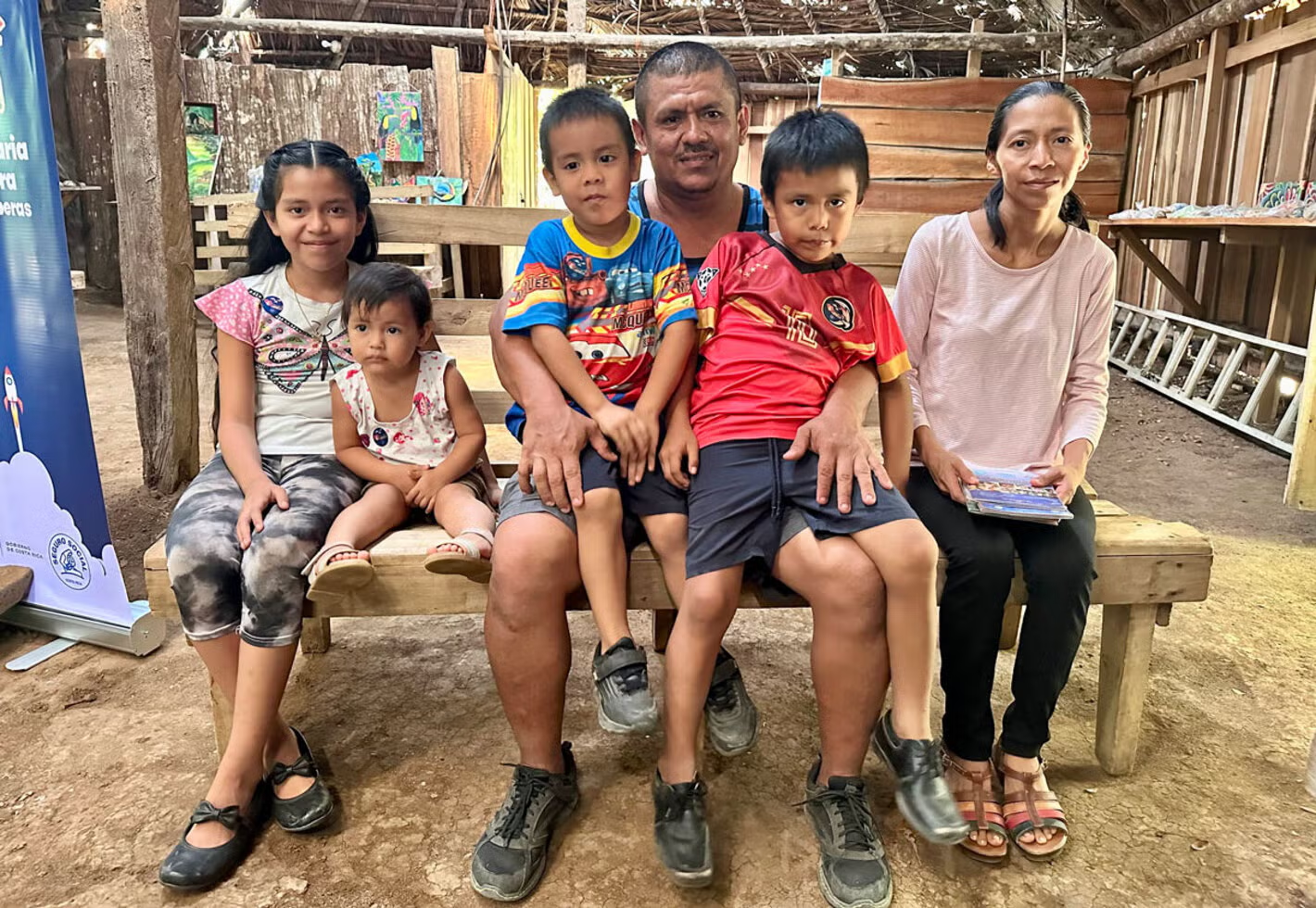How Are Health Inequities Shortening Lives by Decades?
What if your life expectancy was determined by where you were born, the color of your skin, or how much money you earn? Unfortunately, health inequities are shortening lives by decades, and these disparities are becoming more pronounced across the globe. The gap in life expectancy between different socioeconomic groups, racial backgrounds, and regions is growing, leading to unnecessary suffering and loss of life.
Health inequities are shortening lives by decades due to factors like poor access to healthcare, inadequate living conditions, and environmental influences. These inequities affect vulnerable populations more severely, and the consequences of this divide are being felt worldwide. In this article, we explore how these health inequities manifest, why they are shortening lives by decades, and what steps can be taken to address these disparities.
Health inequities are shortening lives by decades, creating a significant divide in global health outcomes. Learn how these disparities impact communities and what needs to be done to address them.
What Are Health Inequities and Why Do They Exist?
Health inequities refer to the unfair and avoidable differences in health status and access to healthcare services between different groups. These differences are not caused by biological factors but by social, economic, and environmental factors that influence an individual’s health outcomes. The leading causes of health inequities are shortening lives by decades include:
1. Socioeconomic Disparities
Low-income communities often face higher rates of chronic diseases, lower life expectancy, and limited access to quality healthcare. Socioeconomic status plays a significant role in determining access to essential health services, nutritious food, and safe living environments. As a result, these individuals are more likely to experience preventable illnesses and shorter lifespans.
2. Racial and Ethnic Disparities
Health inequities are shortening lives by decades for racial and ethnic minorities who face systemic barriers to healthcare. Discrimination in healthcare, lower quality of care, and lack of trust in medical systems are just a few examples of how race and ethnicity contribute to health disparities. These inequities often manifest in higher rates of preventable diseases, such as diabetes and hypertension, in these populations.
3. Geographical Inequities
People living in rural or remote areas often experience health inequities that are shortening lives by decades due to limited access to healthcare facilities, lack of medical professionals, and poor infrastructure. Rural communities may also face challenges related to transportation, making it difficult for individuals to access medical care, particularly for those with chronic health conditions.
4. Environmental Factors
Living in polluted areas, inadequate housing conditions, and exposure to toxic environments can contribute to poor health outcomes, especially for marginalized groups. The health inequities are shortening lives by decades for individuals who live in areas with poor air quality, contaminated water, or unsafe working conditions. These factors significantly increase the likelihood of respiratory diseases, cardiovascular problems, and other health issues.
The Consequences of Health Inequities on Lifespan
The impact of health inequities shortening lives by decades is evident in both developed and developing countries. Here are some of the key consequences:
1. Decreased Life Expectancy
In many high-income countries, the life expectancy gap between the wealthiest and poorest citizens has widened. Research shows that health inequities are shortening lives by decades for individuals living in poverty. For example, those living in disadvantaged neighborhoods may experience a life expectancy that is 10 to 15 years shorter than those living in wealthier areas.
2. Increased Burden on Healthcare Systems
The presence of health inequities shortening lives by decades also places a heavy burden on healthcare systems. Chronic diseases like obesity, diabetes, and hypertension are more common in vulnerable populations, leading to higher healthcare costs and resource shortages. Addressing these disparities is critical to reducing the strain on healthcare providers and ensuring that resources are allocated effectively.
3. Economic Impact
The economic consequences of health inequities shortening lives by decades are also significant. A shorter life expectancy means a shorter working life, which reduces income potential and economic productivity. For families, this can result in financial insecurity and perpetuate cycles of poverty. When individuals cannot work due to illness, the impact extends beyond personal health, affecting communities and economies.
What Can Be Done to Address Health Inequities?
To reverse the trend where health inequities are shortening lives by decades, a multi-faceted approach is needed. Addressing these disparities will require global, national, and local efforts to reduce the social determinants of health and improve access to healthcare. Here are some actionable solutions:
1. Universal Healthcare Access
One of the most effective ways to reduce health inequities is by ensuring that all individuals have access to healthcare. Governments and organizations must work toward universal healthcare systems that remove financial, geographical, and social barriers. This would ensure that people from all backgrounds have access to essential services like preventative care, medical treatments, and health education.
2. Addressing Social Determinants of Health
Efforts must be made to improve the social determinants of health, such as income, education, housing, and employment. Health inequities are shortening lives by decades, but addressing these social factors can significantly improve overall health outcomes. By raising income levels, improving education systems, and creating job opportunities in underserved areas, we can create an environment that promotes healthier lives for all.
3. Targeted Health Interventions
In areas where health inequities are most pronounced, targeted interventions should be implemented to improve health outcomes. These could include:
- Community health programs focused on educating vulnerable populations about healthy lifestyles.
- Improved maternal care for low-income and minority communities to reduce the risk of complications and premature deaths.
- Health screenings and early detection services for diseases like cancer, diabetes, and heart disease in underserved populations.
4. Environmental Improvements
Tackling environmental issues, such as pollution and inadequate housing, is essential to addressing health inequities that are shortening lives by decades. Governments and organizations should invest in cleaner air, safer drinking water, and better infrastructure, particularly in urban areas and industrial zones. This will help reduce the health risks faced by people living in disadvantaged areas.
Expanded Insights on How Health Inequities Are Shortening Lives by Decades
Understanding the Deep Root Causes of Health Inequities
The underlying causes of health inequities shortening lives by decades are complex and multifaceted. These inequities are often deeply rooted in systemic inequalities, including historical, social, and economic factors that have shaped communities over generations. Here are some additional layers of understanding:
1. Historical Context of Health Inequities
Many of the health inequities we see today are the direct result of historical injustices. In countries like the United States, the legacy of slavery, segregation, and discriminatory practices continues to manifest in unequal access to healthcare, education, and employment opportunities for Black, Indigenous, and People of Color (BIPOC). These communities often face higher rates of chronic diseases such as cardiovascular disease, diabetes, and obesity, contributing to shorter life expectancies.
- Example: In the U.S., the life expectancy gap between Black Americans and White Americans is estimated to be 4-5 years shorter. This discrepancy is largely driven by systemic racism, lack of access to quality healthcare, and environmental factors that disproportionately affect Black communities.
2. Geographical Inequities and Global Disparities
Health inequities are not confined to one region or country; they manifest on a global scale. Health inequities are shortening lives by decades especially in low- and middle-income countries (LMICs) where access to healthcare infrastructure is limited.
- Example: According to the World Health Organization (WHO), people living in rural sub-Saharan Africa face life expectancies that are 20 years shorter than those in urban areas. Factors such as limited healthcare facilities, insufficient medical personnel, and inadequate water and sanitation systems contribute to these disparities.
3. Education and Health Literacy
A lack of education and health literacy is another critical factor contributing to health inequities shortening lives by decades. People with lower educational attainment are more likely to have poor health outcomes, which can lead to premature deaths. Education is strongly linked to health because it influences an individual’s ability to understand healthcare options, engage in preventive measures, and make informed decisions.
- Statistic: A study by the CDC found that individuals with less than a high school education are three times more likely to die prematurely from preventable diseases compared to those with a college degree.
The Interconnection Between Poverty, Health Inequities, and Shortened Lifespan
1. The Vicious Cycle of Poverty and Poor Health
Poverty is one of the most significant drivers of health inequities shortening lives by decades. People living in poverty are more likely to experience poor health due to factors like inadequate nutrition, unsafe living conditions, and lack of access to medical care. The stress associated with poverty also negatively impacts mental and physical health.
- Example: People living in poverty are more likely to experience chronic stress, which has been linked to a variety of health issues such as hypertension, heart disease, and mental health disorders. As a result, these individuals face significantly higher rates of preventable diseases, contributing to the premature shortening of their lives.
2. Increased Risk of Infectious Diseases
In addition to chronic diseases, health inequities are shortening lives by decades by increasing the risk of infectious diseases in marginalized communities. Poor sanitation, lack of clean water, and overcrowded living conditions in impoverished areas create ideal conditions for the spread of diseases such as tuberculosis, malaria, and HIV/AIDS.
- Example: In many parts of sub-Saharan Africa, the risk of contracting malaria or HIV/AIDS is significantly higher in low-income communities. Access to preventative measures such as mosquito nets or antiretroviral medications is often limited due to financial constraints, leading to higher mortality rates among impoverished populations.
How Health Inequities Impact Specific Populations
Certain groups within society are particularly vulnerable to health inequities shortening lives by decades due to unique challenges they face. These include racial minorities, women, children, the elderly, and individuals with disabilities.

1. Racial and Ethnic Minorities
As previously mentioned, health inequities are shortening lives by decades for racial and ethnic minorities, particularly those in lower socioeconomic strata. Discrimination within healthcare systems often leads to poorer care, delayed diagnoses, and unequal treatment. Additionally, cultural and language barriers contribute to the lack of trust in healthcare providers, making it harder for minority populations to access adequate services.
- Example: Native Americans in the U.S. have a life expectancy that is 5.5 years shorter than the national average. They also experience high rates of diabetes, heart disease, and substance abuse, which contribute to this disparity.
2. Women and Gender Inequities
Gender plays a significant role in health inequities, particularly for women in patriarchal societies. Discriminatory practices limit women’s access to healthcare services, education, and economic opportunities, contributing to poor health outcomes and shorter lifespans.
- Example: In many countries, women are more likely to experience maternal mortality due to limited access to prenatal care and safe delivery services. According to the World Bank, women in Sub-Saharan Africa are 200 times more likely to die during childbirth than women in high-income countries.
3. Children and Infant Mortality
Infant and child mortality rates are another area where health inequities are shortening lives by decades. Poor nutrition, inadequate healthcare, and unsafe living conditions increase the risk of death during early childhood, especially in developing countries.
- Statistic: According to UNICEF, nearly 5.3 million children under the age of five die each year, primarily due to preventable causes such as malnutrition, poor sanitation, and lack of access to basic healthcare services. Children in low-income regions are disproportionately affected by these inequities.
The Economic Toll of Health Inequities

1. The Cost of Inaction
Addressing health inequities is not only a moral imperative but also an economic necessity. When health inequities are shortening lives by decades, societies face increased healthcare costs, reduced productivity, and greater financial strain.
- Example: A study by the World Health Organization (WHO) estimated that health inequities cost the global economy approximately $12 trillion annually due to lost productivity, healthcare expenses, and early mortality. This figure highlights the economic toll that health inequities shortening lives by decades can have on society as a whole.
2. Investing in Health Equity
Investing in health equity by providing better healthcare access, improving social conditions, and addressing environmental factors can yield significant economic benefits. Studies show that improving health outcomes for marginalized populations can lead to increased productivity and reduced healthcare costs in the long run.
- Example: The U.S. Department of Health and Human Services reported that reducing health disparities could save the nation an estimated $230 billion in healthcare costs over the next 10 years.
A Global Call to Action
In conclusion, health inequities are shortening lives by decades and the time for change is now. Whether it’s addressing the root causes of poverty, improving access to healthcare, or tackling systemic racial and gender-based disparities, every action counts. Governments, organizations, and individuals all have a role to play in closing the health gap. Investing in education, healthcare infrastructure, and social programs can improve life expectancy for marginalized communities and create a healthier, more equitable world.
We cannot afford to ignore these disparities. By prioritizing health equity, we can reverse the trends that have led to health inequities shortening lives by decades and work toward a future where everyone has the opportunity to live a long, healthy life.
Conclusion: A Call for Action to End Health Inequities
In conclusion, health inequities are shortening lives by decades, and the time to act is now. These inequities are driven by social, economic, and environmental factors that disproportionately affect marginalized communities. The consequences are far-reaching, from reduced life expectancy to higher healthcare costs and economic strain. However, by addressing these disparities through policies that ensure universal healthcare, improve social determinants of health, and target interventions for vulnerable populations, we can work towards closing the health gap.
The solutions to health inequities shortening lives by decades are within our reach, but they require a collective effort from governments, healthcare providers, and communities. By working together, we can create a world where everyone, regardless of their background, has an equal opportunity to live a long and healthy life.



